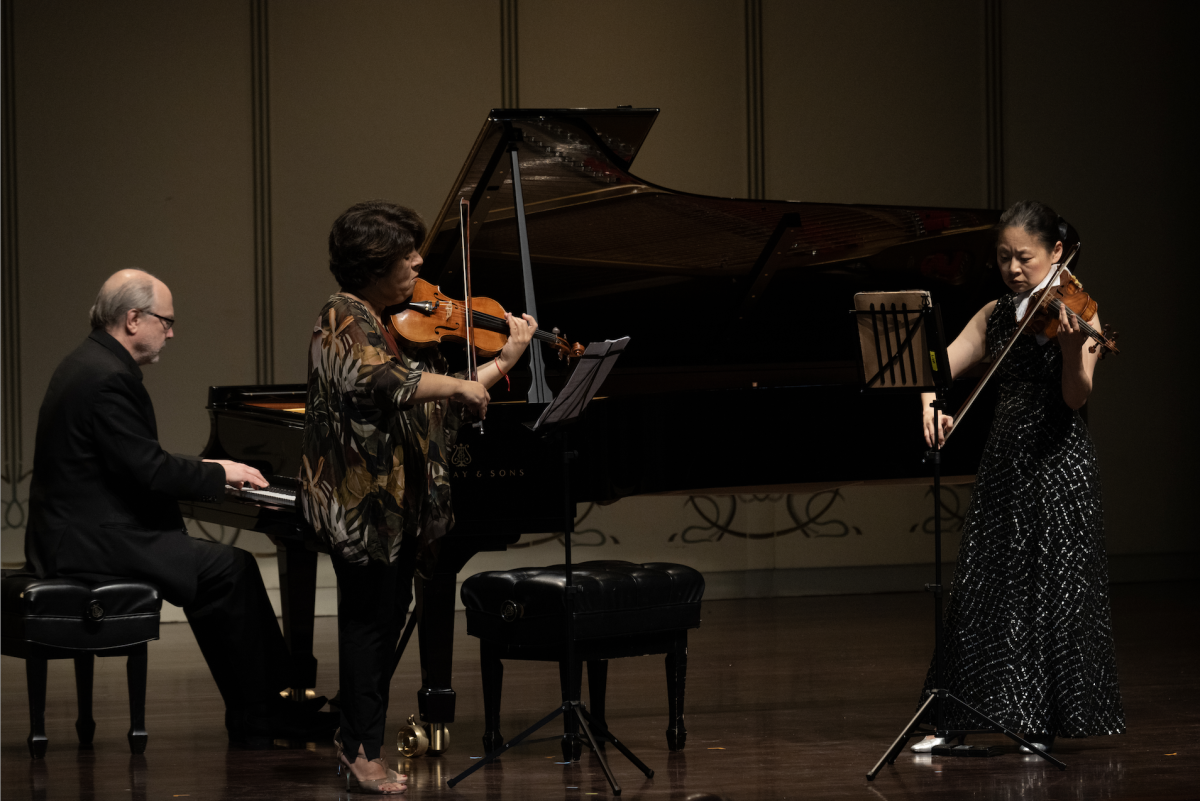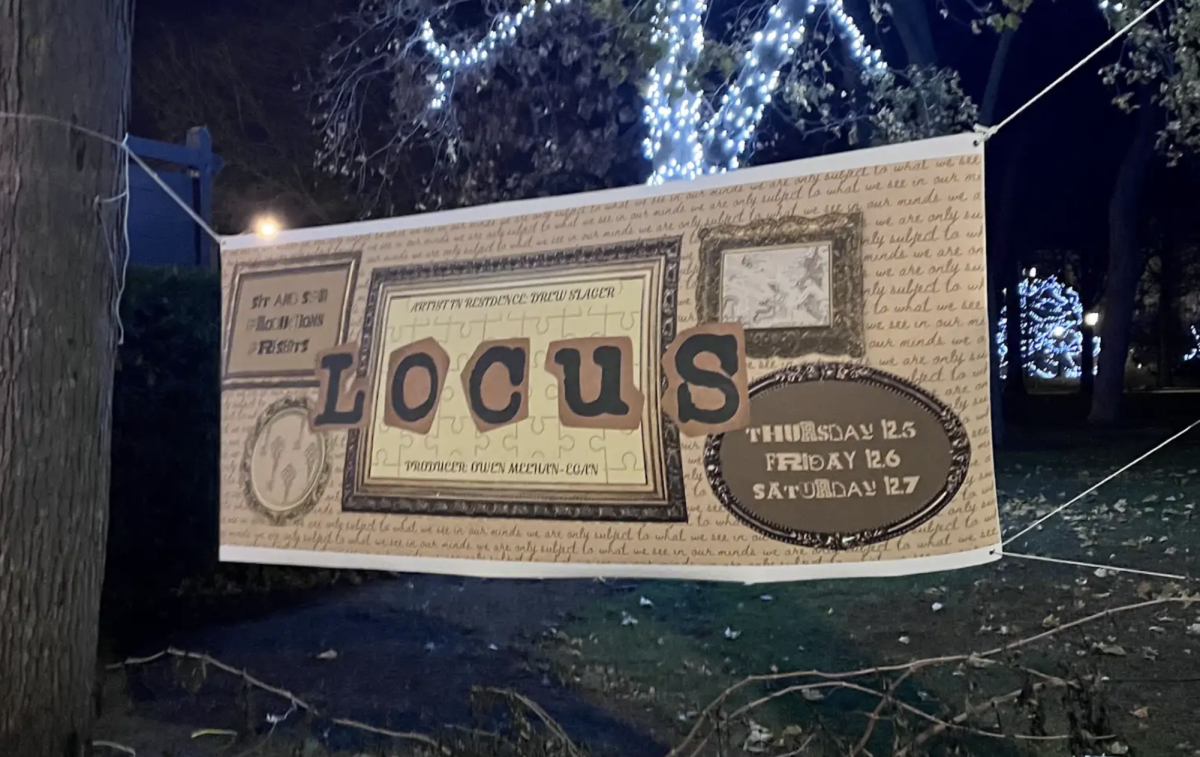The annual Ravinia Festival, situated in Highland Park is North America’s oldest music festival that attracts thousands of concertgoers from all around the country. Its servings of music are diverse, from Bach and Mahler to Lynyrd Skynyrd and John Legend.
On Saturday, the eyes of Ravinia were on the Canadian virtuoso pianist Marc-André Hamelin, who was to take the stage at 1:30 p.m. with the famed violinist Midori Goto — the new Artistic Director of the Piano and Strings Program at Ravinia’s Steans Music Institute — alongside three other faculty members.
The afternoon’s opening piece was Ludwig van Beethoven’s String Trio op. 9, no. 2. With only three instruments — violin, viola and cello — the musicians made the piece sound like a full, orchestral symphony with their well-rounded sounds.
The Trio’s first movement began with a simple, spacious melody that gave way to a more energetic and rustic transition section. The lighthearted dialogue between instruments were brought out masterfully, and the accompaniment remained consistent in the backdrop. The tempo seemed a bit too fast, as some clarity in the fast notes were lost and the musicians weren’t together at times.
The lamenting second movement was well played, albeit with some issues with evenness of notes. The ensemble made clear the wide variety of textures and dynamics Beethoven intended. The third movement, a light dance in triple meter, at times did not possess the requisite dance-like lilt; some measures were too dragged while others too rushed.
The closing fourth movement returned to the rustic and joyous mood of the first. While there were a lot of busy notes that again led to some unwanted tempo fluctuations, the textures were never indigestible or overwhelming. The ensemble erred on the side of elegance rather than intensity, an apt choice for one of Beethoven’s early works.
The next piece was Timo Andres’ Clamber Music for piano and two violins. The two most anticipated performers, Hamelin and Midori, along with another violinist, made their way up the stage amid the audience’s welcoming applause. The piece commenced with a rough and ominous backdrop from the piano’s low register, on which the two violins exchanged irregular musical ‘blows.’ After some time, a slow and laborious pulse formed, perhaps reflecting the “clambering” in the title. After a brief return of the “violin duel,” the piano went off on a fleeting gallop that faded away. The conclusion featured eerie low tones from a violin that was intentionally detuned below its normal range mid-piece (one violinist detuned the violin while the other was playing it), a technique known as “scordatura.” Even in this convoluted piece, Hamelin exemplified his signature humor and total control over the keyboard.
The second half opened with another contemporary piece: Carlos Simon’s “where two or three are gathered” in two movements for violin and cello duo. Midori reappeared onstage, this time with another cellist. The cello droned in the first movement, and the violin let out ritualistic cries. The almost total absence of vibrato created an exotic timbre. The music came to life in the second movement, as the violin and cello sped on with increasing urgency. The final note was humorous and light, as if to toss away all the pent-up momentum, prompting laughs from the audience.
The program’s final entry was Robert Schumann’s Piano Quartet, op. 47. It was a collaboration between Hamelin, Midori, a violist and a cellist. The first movement began with a short and spacious introduction, followed by a drastic increase in tempo and the jovial main tune. While Hamelin has the technique to reliably hit all the right notes no matter how difficult the passage, I was more impressed with his calmness, control and ability to listen intently to the other musicians even while playing. The atmosphere was like the Beethoven piece: elegant and emphatic at the right moments, yet not overly dramatic.
The second movement, a fleet-footed “scherzo,” was excellently controlled by the ensemble. The Beethovenian counterpoint was again brought out to the fore, and the syncopations in the middle section were uneasy yet charming. The third movement, while played a bit too fast to fully relish the lush melodies, was nevertheless noble and romantic. The change of meter in the middle section brought along a softer and magical tone color by the whole ensemble.
The fourth and final movement had echoes of Beethoven, as the ensemble stormed through the intense and contrapuntal passages without hesitation. Even in softer sections, the momentum never dissolved, and the frequent markings to play loud and accented — uncharacteristic of Schumann — were obsessively heeded. As the last note got ever nearer, the ensemble shifted gears, and the closing dash to the finish line was met with an eruption of applause.
The Beethoven trio, while seemingly under-rehearsed, was a convincing opening that eased the audience in. The two contemporary pieces by Andres and Simon introduced the audience to various musical colourings unseen in traditional classical repertoire, and the Schumann quartet proved a deeply thrilling finale. It was a satisfying afternoon in the diverse and ever-growing world of classical music.
Email: [email protected]
Related Stories:
— CAPTURED: 2024 Winnetka Music Festival
— ‘Soli Deo Gloria’: Evanston’s Bach Week Festival signs off with Bach’s ‘Mass in B minor’
— SWAN travels around the world for third annual Kresgepalooza






